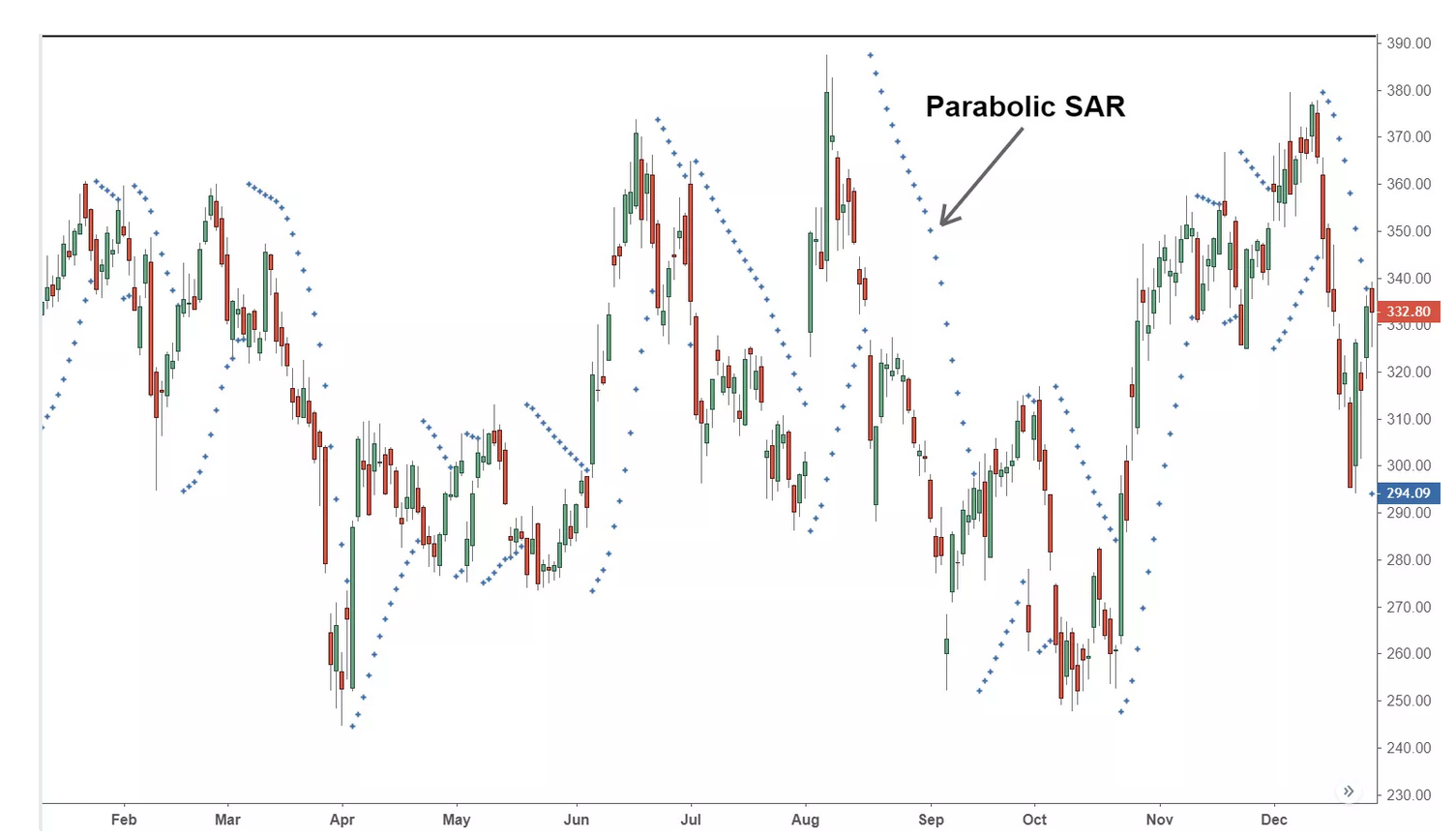97 Parabolic stop and reverse (psar)
PSAR determines trend direction and potential reversals in price.
The parabolic SAR indicator appears on a chart as a series of dots, either above or below an asset’s price, depending on the direction the price is moving. A dot is placed below the price when it is trending upward, and above the price when it is trending downward.
This indicator tracks the lowest low and highest high values over a prior time period using two independent equations. Each time a new high or low appears, the difference to the prior high or low is multiplied by however many prior highs or lows occurred (starting at 0.02 and as much as 0.2). Which equation to use depends on how the closing price compare to the high or low PSAR.
Basically, as a price gains momentum, the PSAR gets larger or smaller depending if the price trends higher or lower, respectively.

Figure 11.8: PSAR
The indicator works most effectively in trending markets where large price moves allow traders to capture significant gains. When a security’s price is range-bound, the indicator will constantly be reversing, resulting in multiple low-profit or losing trades.